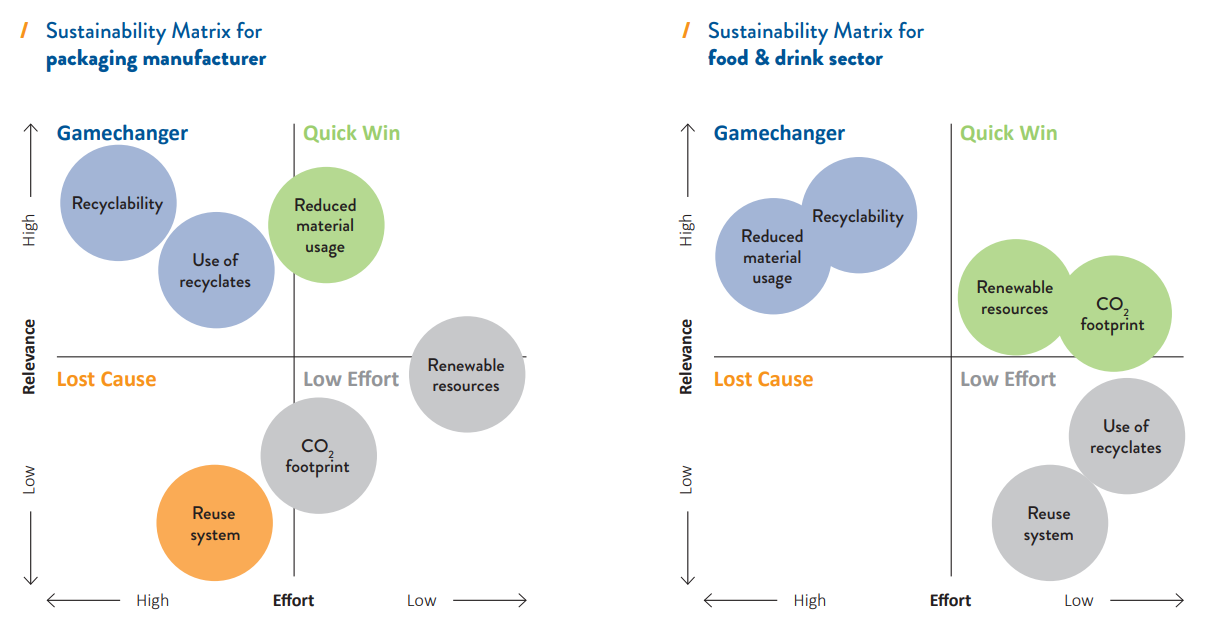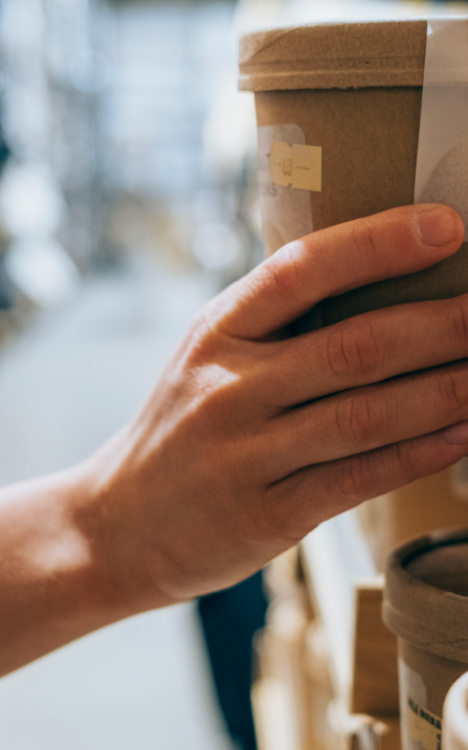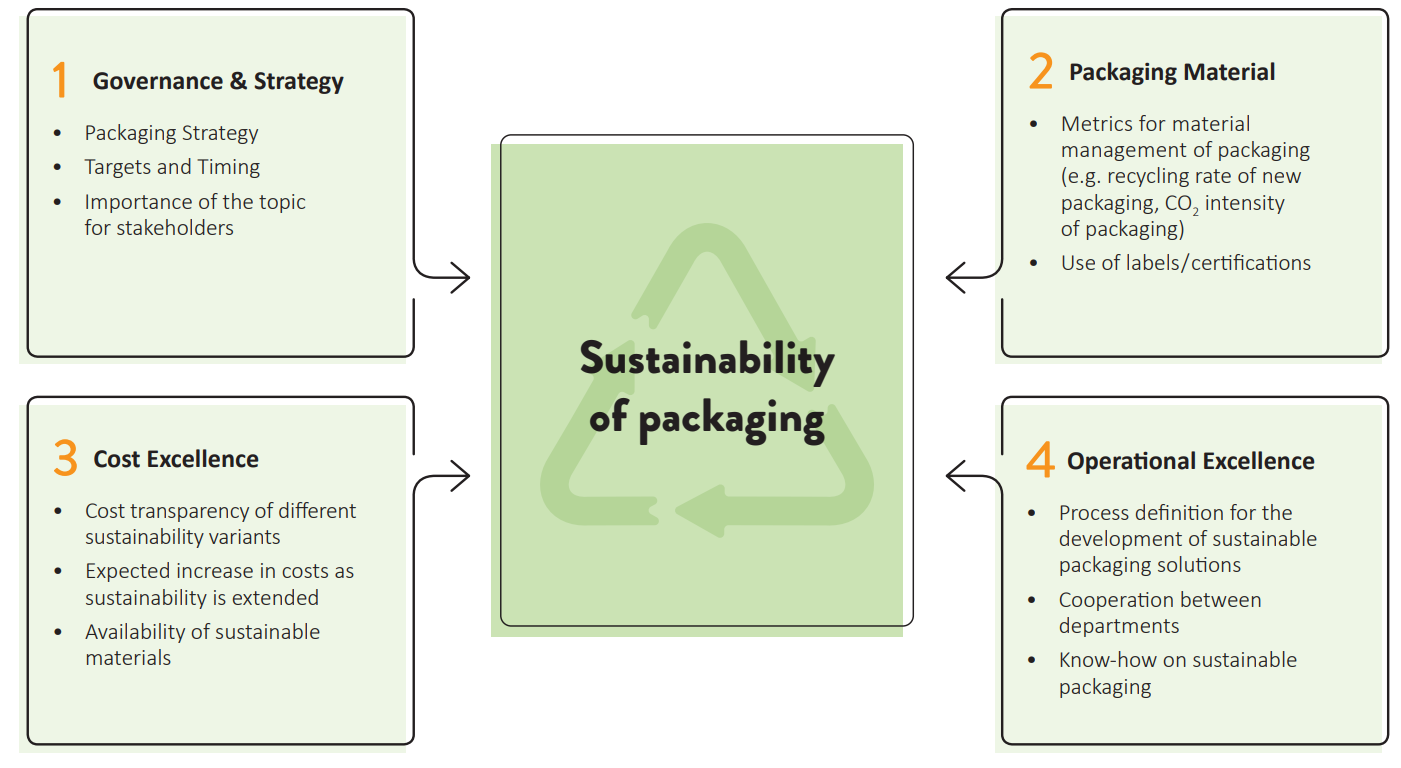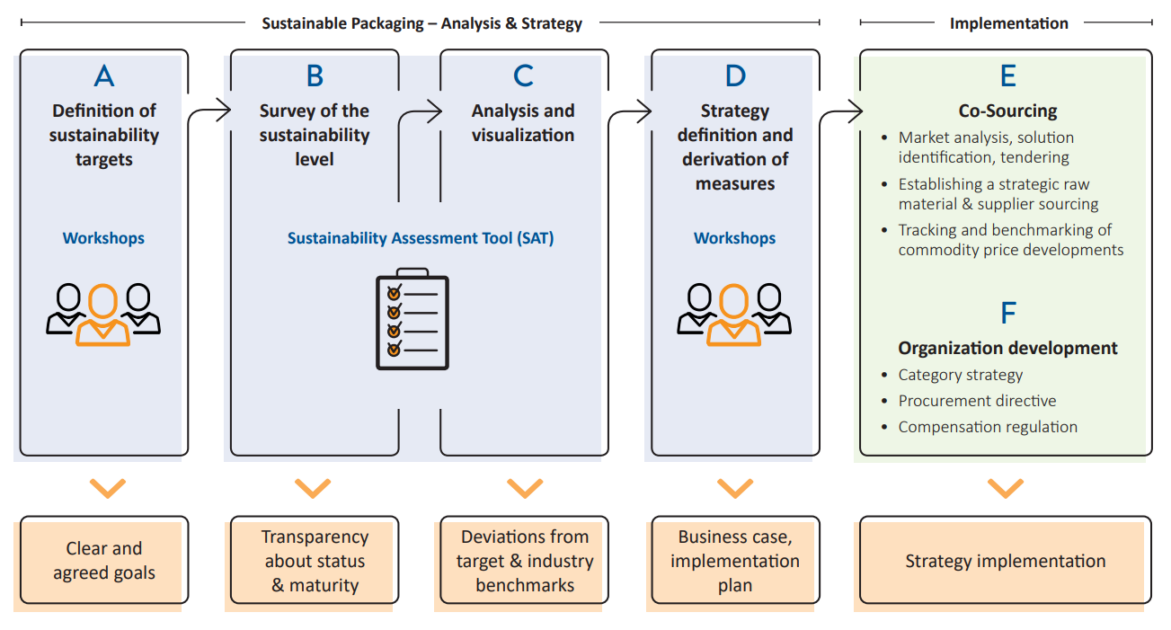The use of a sustainability matrix is useful for evaluating sustainability approaches in general at a product level. It compares the effort the implementation processes will take the company to the actual relevance for the market or customer. Depending on the particular perspective – the packaging manufacturer versus the food and drink sector – possible approaches for sustainable packaging solutions will be regarded and evaluated differently.

In food retail, shelf life and product quality assurance are the top priorities. Another factor is making the product as easy and convenient for the customer to use and handle as possible. The use of recycled materials is therefore only possible to a certain extent.
Using less material is a game changer in terms of sustainability for retail and the consumer goods sector. On the one hand it is seen as quite time-consuming, but on the other hand very much in demand from customers.







